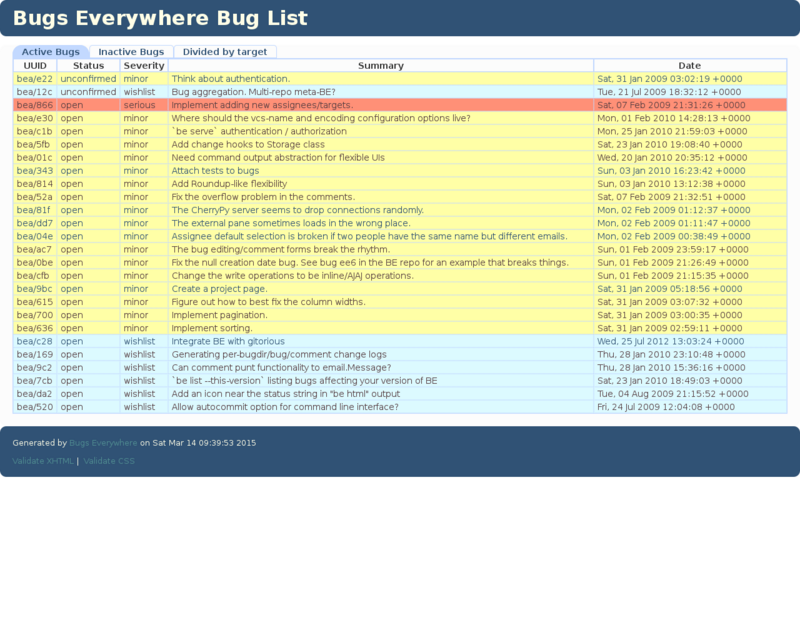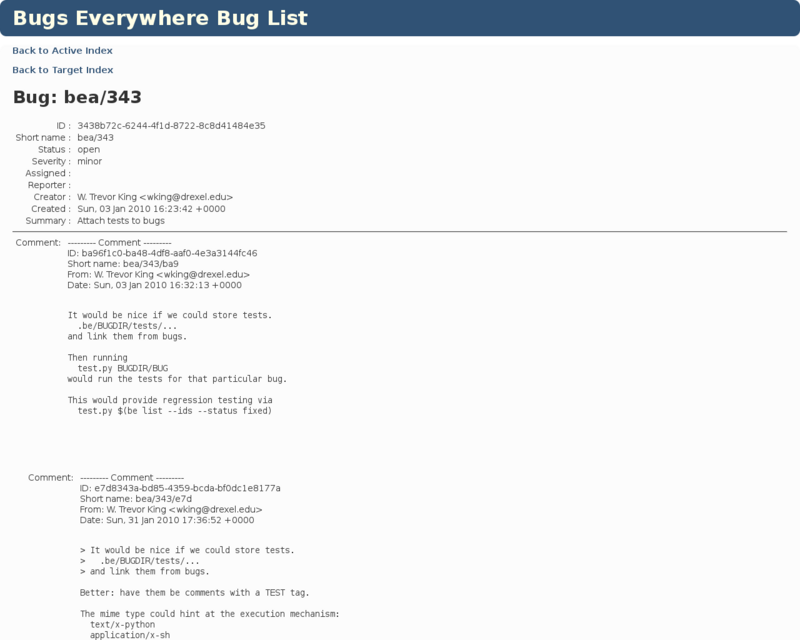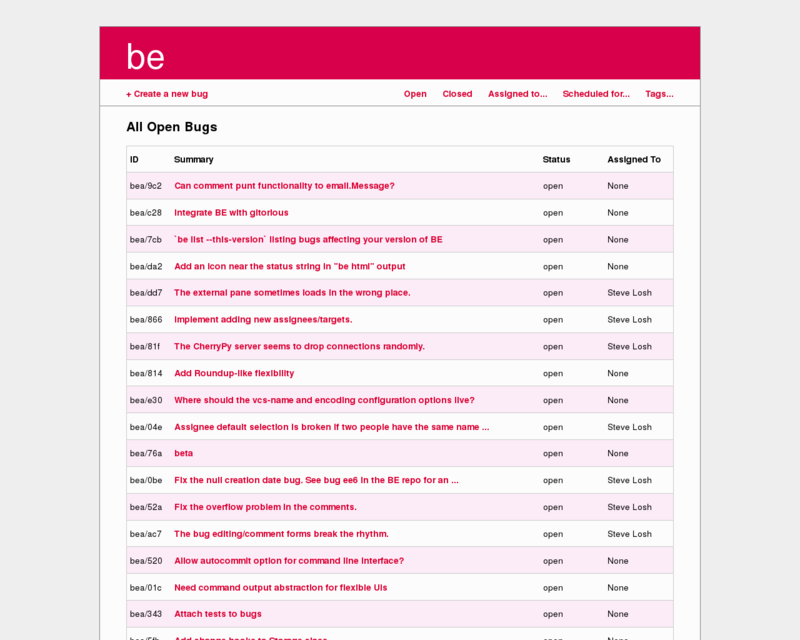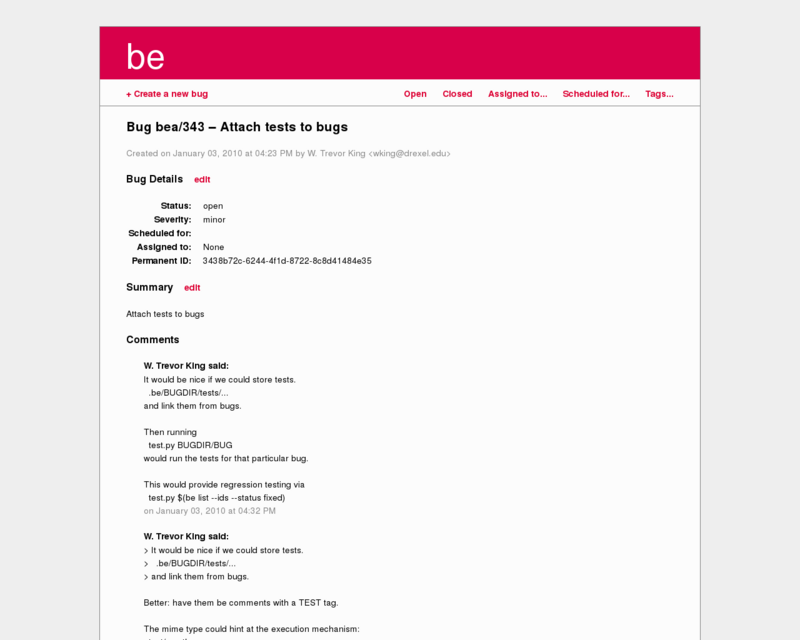Bugs Everywhere is a “distributed bugtracker”, designed to complement distributed revision control systems.
Installation
Bugs Everywhere is packaged for Debian, install the bugs-everywhere package. However, this does not seem to contain the interactive web interface, so you might want to also clone the repository.
git clone git://gitorious.org/be/be
Adding a bug
When you add a bug, either by the web interface, or the command line, you will get a new file like this.
.be/bea86499-824e-4e77-b085-2d581fa9ccab/bugs/5b30ef56-b01e-462c-adaf-682afe828277/values
The first UUID (bea...) is the bug directory UUID. You can have mutiple directories in the .be directory, perhaps one for bugs, and one for planning. However, I am not sure how this is used correctly, and there seems to be a bug in the be new command when I tried to specify a bug directory explicitly.
Adding a comment
This creates two new files, values, which contains a JSON object describing the comment, and body, which contains the text for the comment.
.be/bea86499-824e-4e77-b085-2d581fa9ccab/bugs/5b30ef56-b01e-462c-adaf-682afe828277/comments/ba5e3386-5079-4c87-867f-de1008c59cd2/body
.be/bea86499-824e-4e77-b085-2d581fa9ccab/bugs/5b30ef56-b01e-462c-adaf-682afe828277/comments/ba5e3386-5079-4c87-867f-de1008c59cd2/values
Web Interfaces
There are at least a couple of web interfaces for bugs everywhere.
HTML
The first and simplist can be accessed by using the be html command. With no options, this will start serving up pages that look like this.
 |
 |
Cherry Flavoured Bugs Everywhere (cfbe)
 |
 |
